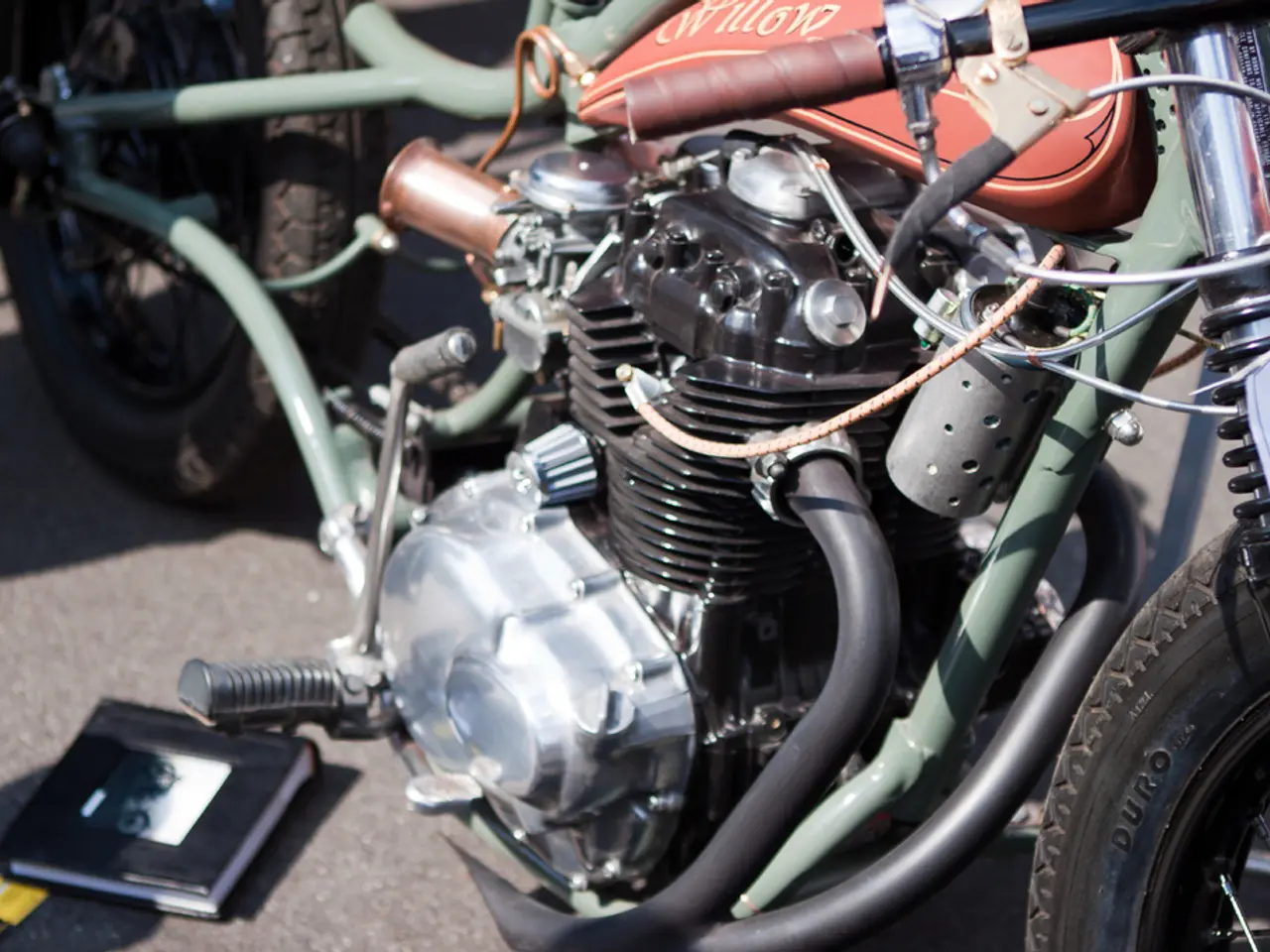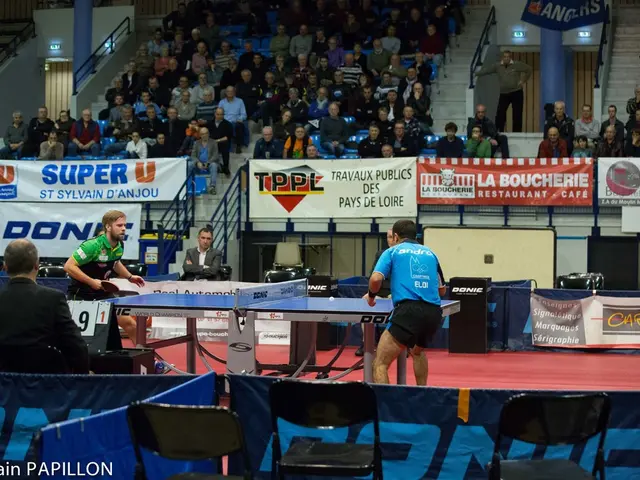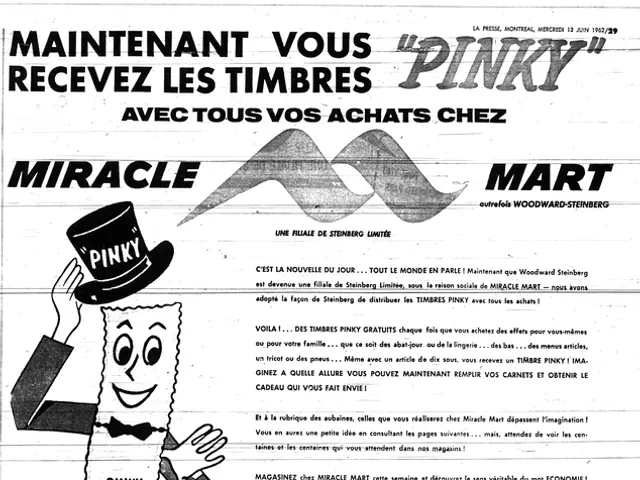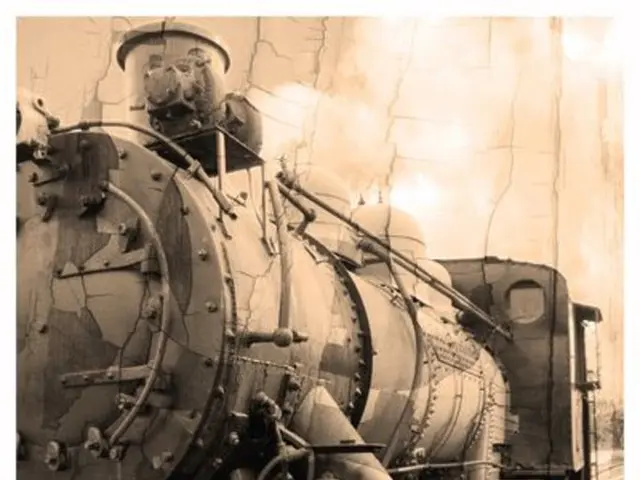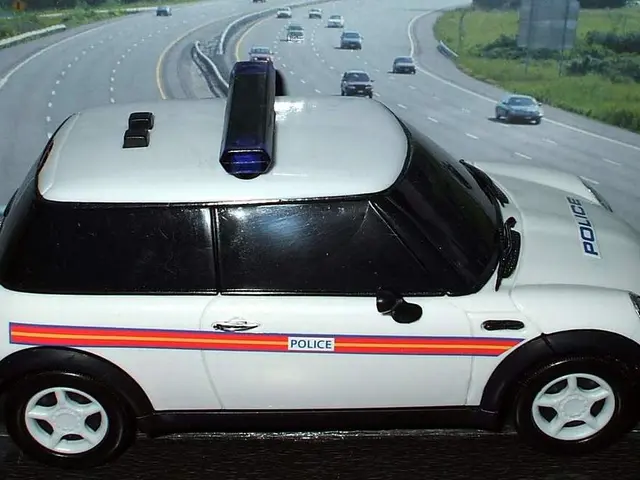In Kawasaki's 2050 vision, hydrogen-fueled robotic equines take the spotlight, replacing dreams of airborne automobiles.
Kawasaki, the renowned Japanese motorcycle manufacturer, has made a significant stride in the realm of eco-friendly transportation with the unveiling of their innovative concept, CORLEO, at Expo 2025 Osaka. This hydrogen-powered robotic horse, designed as a personal off-road vehicle, promises zero emissions and exceptional all-terrain capability.
CORLEO, part of Kawasaki's "ALICE" initiative, is powered by a 150cc hydrogen engine that generates electricity to power the four individual drive units in each leg. The robotic horse features four legs with rubberized, slip-resistant hooves for navigating diverse terrains like grasslands, rocky areas, and rubble fields. Shock-absorbing leg mechanics ensure smooth walking and running, while rider control is achieved through weight shifts detected by foot pegs and handlebars.
The instrument panel onboard CORLEO displays hydrogen levels, travel routes, and center-of-gravity position, providing the rider with essential information. For night-time riding, CORLEO projects illuminated markers onto the road surface to guide the rider.
While CORLEO is currently on display at Expo 2025 Osaka, running from April 13 until October 13, 2025, Kawasaki has set its sights on commercial availability of the vehicle in the 2050s. The prototype demonstrates the potential for hydrogen and robotics to redefine eco-conscious off-road transport.
CORLEO's special features include a split rubber "hoof", a swingarm-like rear leg assembly, and adjustable stirrups. The split hooves are designed to conform to varied surfaces, providing grip where traditional tires might slip, while the swingarm absorbs impacts and maintains stability over uneven surfaces. The adjustable stirrups ensure optimal riding posture for various riding styles.
Riders guide CORLEO through weight shifts detected by sensors in the stirrups and handlebars, creating a natural bond between human and robot. The hydrogen is stored in a canister mounted at the rear of the machine, providing clean, quiet operation with only water as a byproduct.
Kawasaki bills CORLEO as a glimpse into what off-road transportation might look like in the 2050s, potentially taking riders to breathtaking vistas otherwise inaccessible to traditional vehicles. As the world continues to search for sustainable solutions, CORLEO offers an exciting possibility for the future of off-road transport.
The robotic horse, CORLEO, unveiled by Kawasaki, showcases advancements in both the transportation and technology industries, powered by a hydrogen engine. Its futuristic design, featuring adjustable stirrups and a swingarm-like rear leg assembly, aims to redefine eco-conscious off-road transport. Kawasaki's goal is to commercialize this innovative vehicle by the 2050s, integrating it with the latest gadgets and style trends to revolutionize the motorcycle sector.
